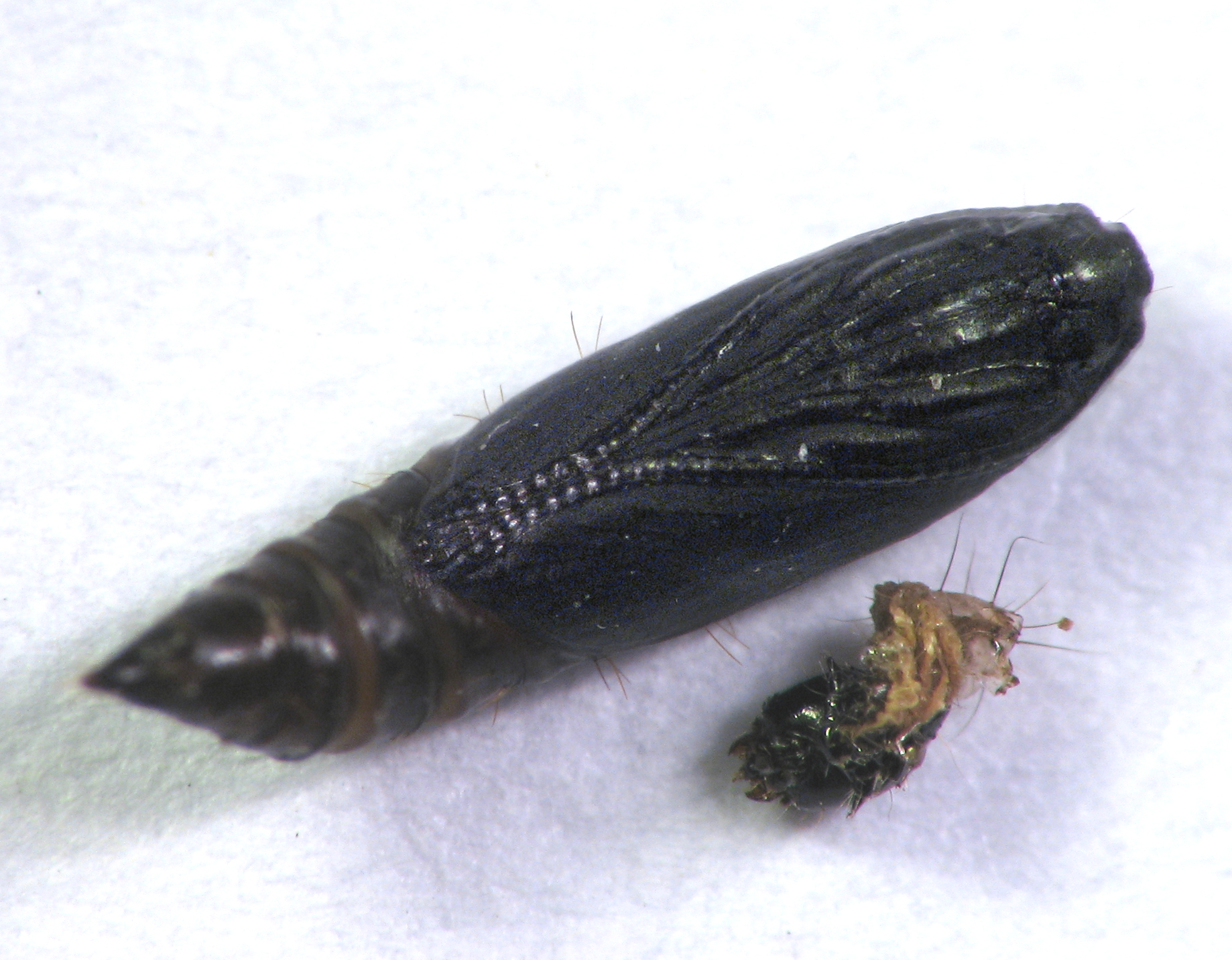|
Dichomeris Ligulella
The palmerworm (''Dichomeris ligulella'') is a moth of the family Gelechiidae. It is found in eastern North America. The wingspan The wingspan (or just span) of a bird or an airplane is the distance from one wingtip to the other wingtip. For example, the Boeing 777–200 has a wingspan of , and a wandering albatross (''Diomedea exulans'') caught in 1965 had a wingspan of ... is 15–18 mm. Adults are on wing from April to October. There is one generation per year. The larvae feed on apple, hackberry, hazel and oak. The larvae skeletonize leaves and fold or roll them during feeding. It is occasionally responsible for widespread defoliation of hardwood species. Outbreaks rarely last more than one or two years and usually occur during unusually hot and dry springs. References External linksImages [...More Info...] [...Related Items...] OR: [Wikipedia] [Google] [Baidu] |
Moth
Moths are a paraphyletic group of insects that includes all members of the order Lepidoptera that are not butterflies, with moths making up the vast majority of the order. There are thought to be approximately 160,000 species of moth, many of which have yet to be described. Most species of moth are nocturnal, but there are also crepuscular and diurnal species. Differences between butterflies and moths While the butterflies form a monophyletic group, the moths, comprising the rest of the Lepidoptera, do not. Many attempts have been made to group the superfamilies of the Lepidoptera into natural groups, most of which fail because one of the two groups is not monophyletic: Microlepidoptera and Macrolepidoptera, Heterocera and Rhopalocera, Jugatae and Frenatae, Monotrysia and Ditrysia.Scoble, MJ 1995. The Lepidoptera: Form, function and diversity. Oxford, UK: Oxford University Press; 404 p. Although the rules for distinguishing moths from butterflies are not well establishe ... [...More Info...] [...Related Items...] OR: [Wikipedia] [Google] [Baidu] |
Gelechiidae
The Gelechiidae are a family of moths commonly referred to as twirler moths or gelechiid moths. They are the namesake family of the huge and little-studied superfamily Gelechioidea, and the family's taxonomy has been subject to considerable dispute. These are generally very small moths with narrow, fringed wings. The larvae of most species feed internally on various parts of their host plants, sometimes causing galls. Douglas-fir (''Pseudotsuga'') is a host plant common to many species of the family, particularly of the genus ''Chionodes'', which as a result is more diverse in North America than usual for Gelechioidea. By the late 20th century, over 900 genera with altogether more than 4,500 species were placed here, with about 650 genera known from North America alone. While these figures are certainly outdated, due to the many revisions to superfamily Gelechioidea and new descriptions of twirler moths, they still serve to show the enormous biodiversity contained in this import ... [...More Info...] [...Related Items...] OR: [Wikipedia] [Google] [Baidu] |
Wingspan
The wingspan (or just span) of a bird or an airplane is the distance from one wingtip to the other wingtip. For example, the Boeing 777–200 has a wingspan of , and a wandering albatross (''Diomedea exulans'') caught in 1965 had a wingspan of , the official record for a living bird. The term wingspan, more technically extent, is also used for other winged animals such as pterosaurs, bats, insects, etc., and other aircraft such as ornithopters. In humans, the term wingspan also refers to the arm span, which is distance between the length from one end of an individual's arms (measured at the fingertips) to the other when raised parallel to the ground at shoulder height at a 90º angle. Former professional basketball player Manute Bol stood at and owned one of the largest wingspans at . Wingspan of aircraft The wingspan of an aircraft is always measured in a straight line, from wingtip to wingtip, independently of wing shape or sweep. Implications for aircraft design and anima ... [...More Info...] [...Related Items...] OR: [Wikipedia] [Google] [Baidu] |
Celtis
''Celtis'' is a genus of about 60–70 species of deciduous trees, commonly known as hackberries or nettle trees, widespread in warm temperate regions of the Northern Hemisphere. The genus is part of the extended hemp family (Cannabaceae). Description ''Celtis'' species are generally medium-sized trees, reaching tall, rarely up to tall. The leaves are alternate, simple, long, ovate-acuminate, and evenly serrated margins. Diagnostically, ''Celtis'' can be very similar to trees in the Rosaceae and other rose motif families. Small flowers of this monoecious plant appear in early spring while the leaves are still developing. Male flowers are longer and fuzzy. Female flowers are greenish and more rounded. The fruit is a small drupe in diameter, edible in many species, with a dryish but sweet, sugary consistency, reminiscent of a date. Taxonomy Previously included either in the elm family (Ulmaceae) or a separate family, Celtidaceae, the APG III system places ''Celtis'' ... [...More Info...] [...Related Items...] OR: [Wikipedia] [Google] [Baidu] |
Dichomeris
''Dichomeris'' is a genus of moths in the family Gelechiidae erected by Jacob Hübner in 1818. Selected species *''ligulella'' species group **''Dichomeris ligulella'' Hübner, 1818 **'' Dichomeris gausapa'' Hodges, 1986 *''acuminata'' species group **'' Dichomeris acuminatus'' (Staudinger, 1876) **'' Dichomeris nenia'' Hodges, 1986 *''condaliavorella'' species group **'' Dichomeris condaliavorella'' (Busck, 1900) *''citrifoliella'' species group **'' Dichomeris blanchardorum'' Hodges, 1986 **'' Dichomeris citrifoliella'' (Chambers, 1880) **'' Dichomeris carycina'' (Meyrick, 1914) **'' Dichomeris caryophragma'' (Meyrick, 1923) **'' Dichomeris diacnista'' (Meyrick, 1923) *''marginella'' species group **'' Dichomeris marginella'' (Fabricius, 1781) **'' Dichomeris juniperella'' (Linnaeus, 1761) *''solatrix'' species group **'' Dichomeris solatrix'' Hodges, 1986 *''hypochloa'' species group **'' Dichomeris hypochloa'' Walsingham, 1911 **'' Dichomeris sacricola'' (Meyrick, 1922) **'' D ... [...More Info...] [...Related Items...] OR: [Wikipedia] [Google] [Baidu] |



